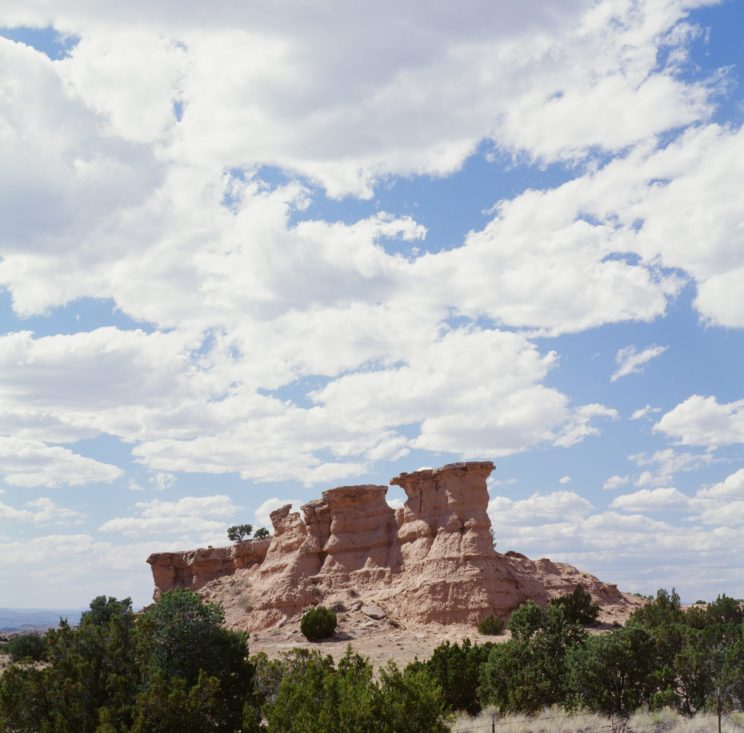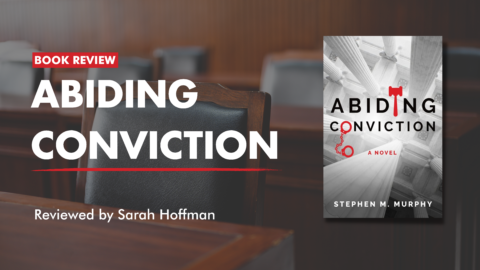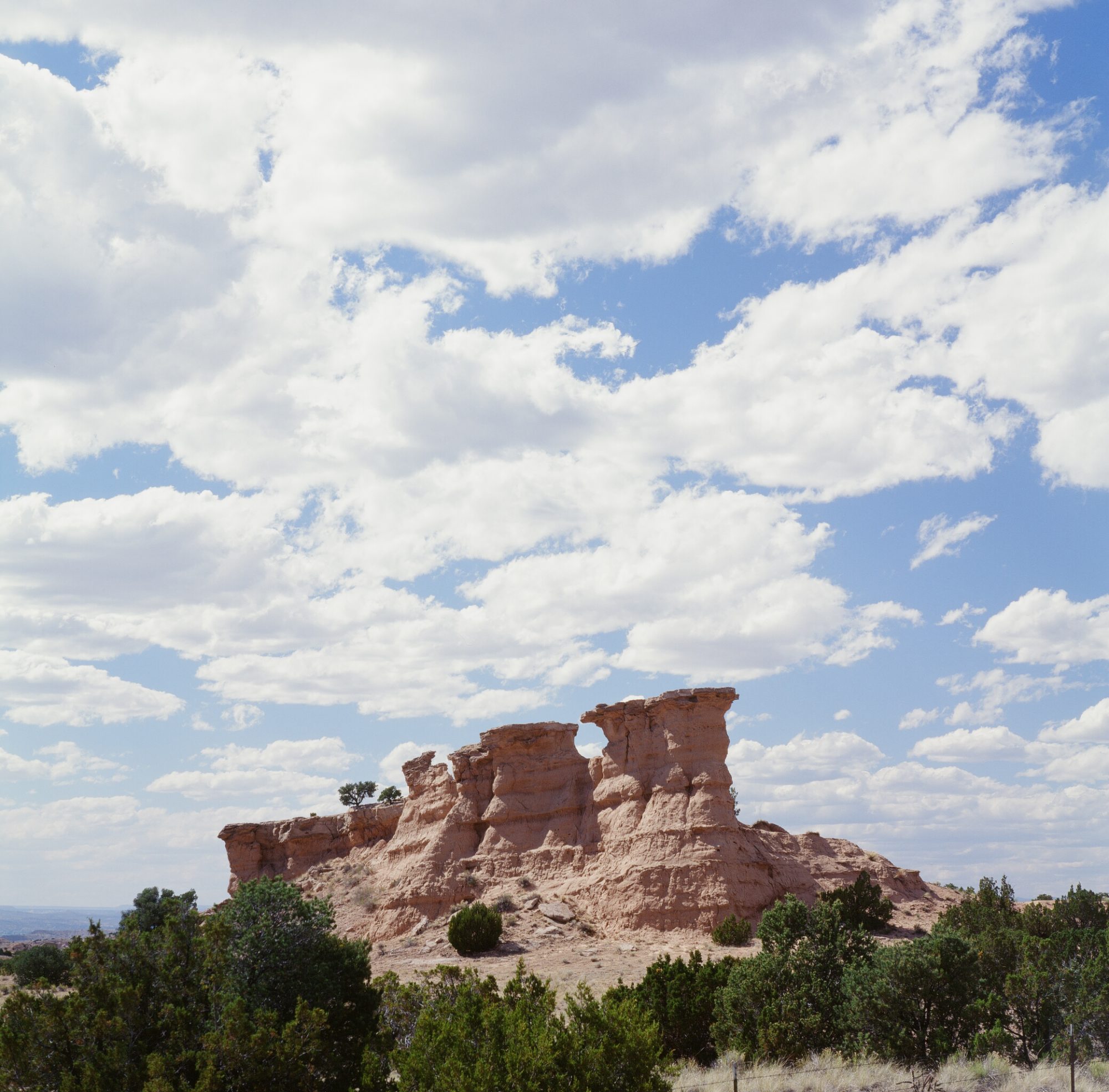
The sky is huge, the clouds heroic. In the summer the heavens open with a torrent of rain and an opera of lightning to rival Wagner. The colors are soft blue, soft pink, and adobe tan.
History is everywhere. Welcome to Santa Fe.
This guide is a bit personal. My connection to Santa Fe has two periods. The first was in
the mid 1950’s, when my father worked at the laboratory in Los Alamos. I was a little boy.
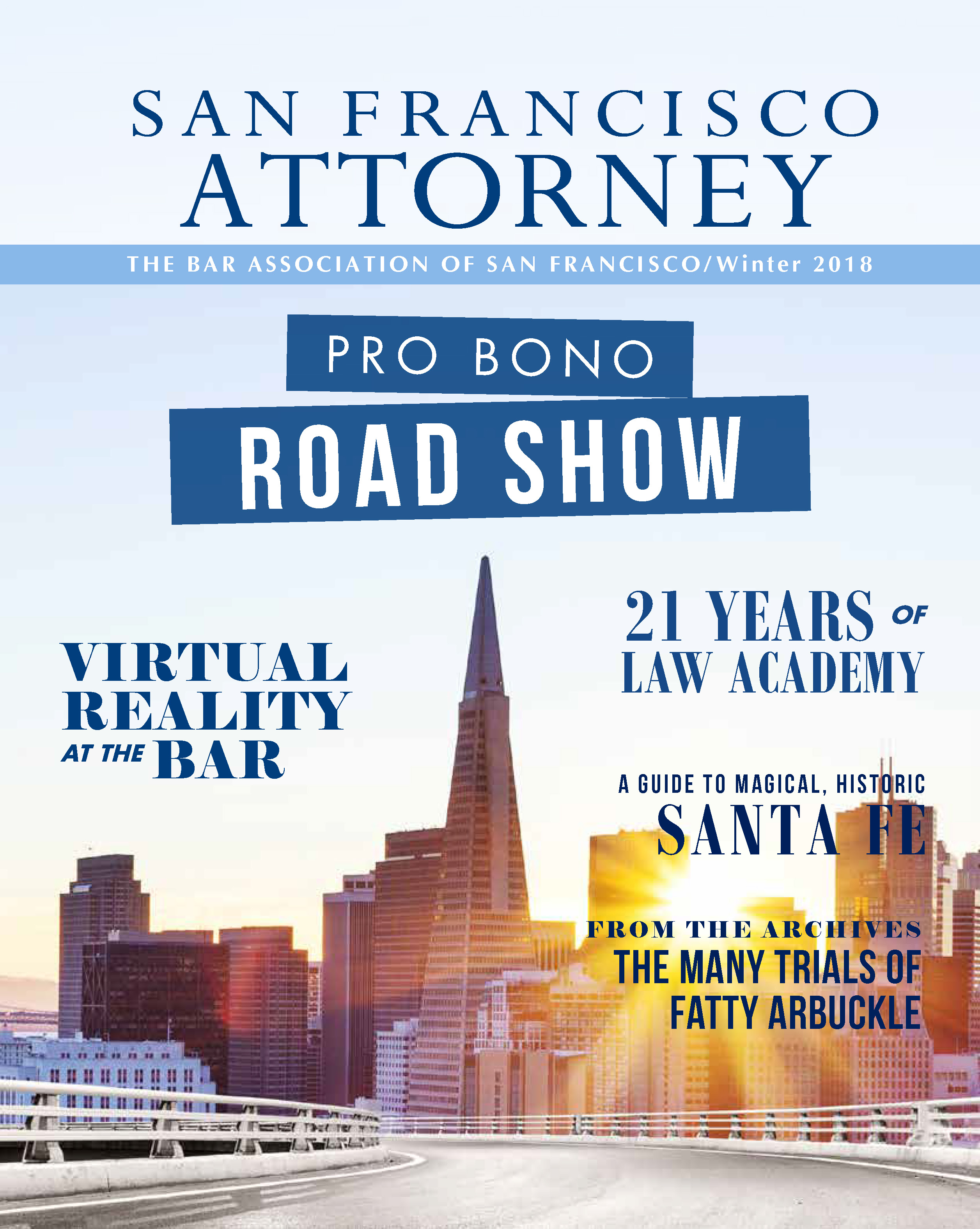
I built miniature adobe houses on the banks of the Rio Grande and caught horned toads. It was a happy time for me. The second period began when my father’s first cousin (and my godfather) Sam Ballen bought a historic hotel, La Fonda, on the plaza in Santa Fe. Sam had five beautiful daughters and I remain very close to them today.
Santa Fe was founded in 1607 as la Villa Real de la Santa Fe de San Francisco de Asisi. That means the Royal Town of the Holy Faith of Saint Francis of Asisi. It served as a trading center for the hide and tallow trade between Mexico and St. Joseph, Missouri. Hence, the Santa Fe Trail.
Santa Fe was also a point of refuge for Jews who were escaping the inquisition from Spain and Mexico. They converted nominally to Catholicism, but retained Jewish customs. They sometimes refer to themselves as Conversos. Nancy de Ita, one of our attorney colleagues in San Mateo, has ancestors who walked from Mexico City to Santa Fe. Her family used to own the lot where the Hilton Hotel now stands. For more on the Conversos, read To the Ends of the Earth by Stanley Hordes.
How to get there:
1. By Air
The speediest way to Santa Fe is to fly to Albuquerque. Albuquerque was founded as a crossroads for the railroads. It sits on the banks of the Rio Grande. The Albuquerque airport
looks like almost any modem American airport, but with a superficial southwest veneer.
You can take a shuttle van from the airport to Santa Fe or you can take the train, called the Railrunner. You can also rent a car and drive north on Highway 25. It takes about an hour and a quarter and the signs direct you right to the plaza.
But since you are here to relax and see something different, take Highway 40 East for just a few miles and then take Highway 14 North. This is the Turquoise Trail. It will take you through some beautiful scenery and the town of Madrid. Madrid is an abandoned coal mining town which is now an artists’ colony. Stop for a snack and visit the old saloon, opera house and museum. There’s only one main street with a few art galleries. Many more and much better to come in Santa Fe.
2. By Car
It takes three days of hard driving from San Francisco to Santa Fe. But why not dawdle along the way? There’s plenty to see. Take Highway 40 East and pass through Seligman, Flagstaff and Winslow, Arizona. You can stay at the Tee Pee motor lodge in Holbrook. All of the rooms look like wigwams.
Distances in New Mexico and Arizona are huge. You might think of a trip from Montgomery Street to the courthouse on Golden Gate Avenue and back as a half-day adventure. Multiply that by 50 or 100. To get a feel for the great distances, read one of Tony Hillerman’s books.
Or why not see it yourself? You can digress north to Canyon de Chelly. Spend a night or two at the Thunderbird Lodge, hire a guide and take a jeep tour of the ancient ruins and cliff paintings. You are in Navajo County. Keep going north to Mexican Water and Highway 160. Stop off for a rest at the trading post at Teec Nos Pos. If hasn’t charged a bit since I was a boy of eight.
Continue on to Highway 64 and Shiprock. Shiprock is a volcanic outcropping. You can see it for miles and miles. It is heroic from any viewpoint.
Your next way station is Farmington. Farmington is an oil, gas and agriculture hub. Stop off at a pawnshop and buy an old six shooter, or not. Continue east to Chama. You can hire a fishing guide, or take a trip on the coal-powered Cumbres and Toltec narrow gauge railway, a beautiful trip.
Take Highway 64 South to Highway 84 and Abiquiu. Stop off of Los Ojos. This is a tiny place. It is home to a wool-growing and weaving co-operative that was founded by a veteran of the freedom rides of the 1960’s. They sell wonderful handmade rugs. More on rugs later.
Near Abiquiu is the Ghost Ranch where Georgia O’Keefe and Alfred Stieglitz lived. It’s now a guest house and conference center. If you decide to stay there, be sure to make a reservation.
Stop off at the amphitheater in Abiquiu. Then drive on past Hernandez. Ansel Adams took an iconic photo of the moon rising there. But it’s all different now. Then drive on through Espanola and into Santa Fe.
Or you can drive straight on east on Highway 40 through Gallup and Grants. Grants used to be a uranium mining town. It’s pretty empty now, but you can stop at the Atomic Cafe. Be sure to turn off at McCarty’s to visit the pueblo at Acoma. Acoma Pueblo is perched on a high mesa. In ancient times, the only access was by a narrow, steep trail. Thus the residents protected themselves from enemies. Today, there is a road to the top. You can take a bus from the visitor’s center. Acoma has been the scene of many Hollywood movies. They make and sell a wonderful and distinctive black and white pottery. At one time in the nineteenth century a Sephardic Jew named Solomon Bibo married a Native American woman. He became the governor of Acoma.
Now you can turn from Thoreau to Crown Point. Once a month Navajo women hold an auction of their hand-woven rugs. The auction remits all of the proceeds (less expenses) to the weavers. Thus they receive far more of the fruits of their labors than if you bought from a dealer.
You can continue north from Crown Point to the ruins of Chaco Canyon. These are some of the most magnificent in the southwest. Going there is a project. Now continue east past Albuquerque and north into Santa Fe.
Around The Plaza
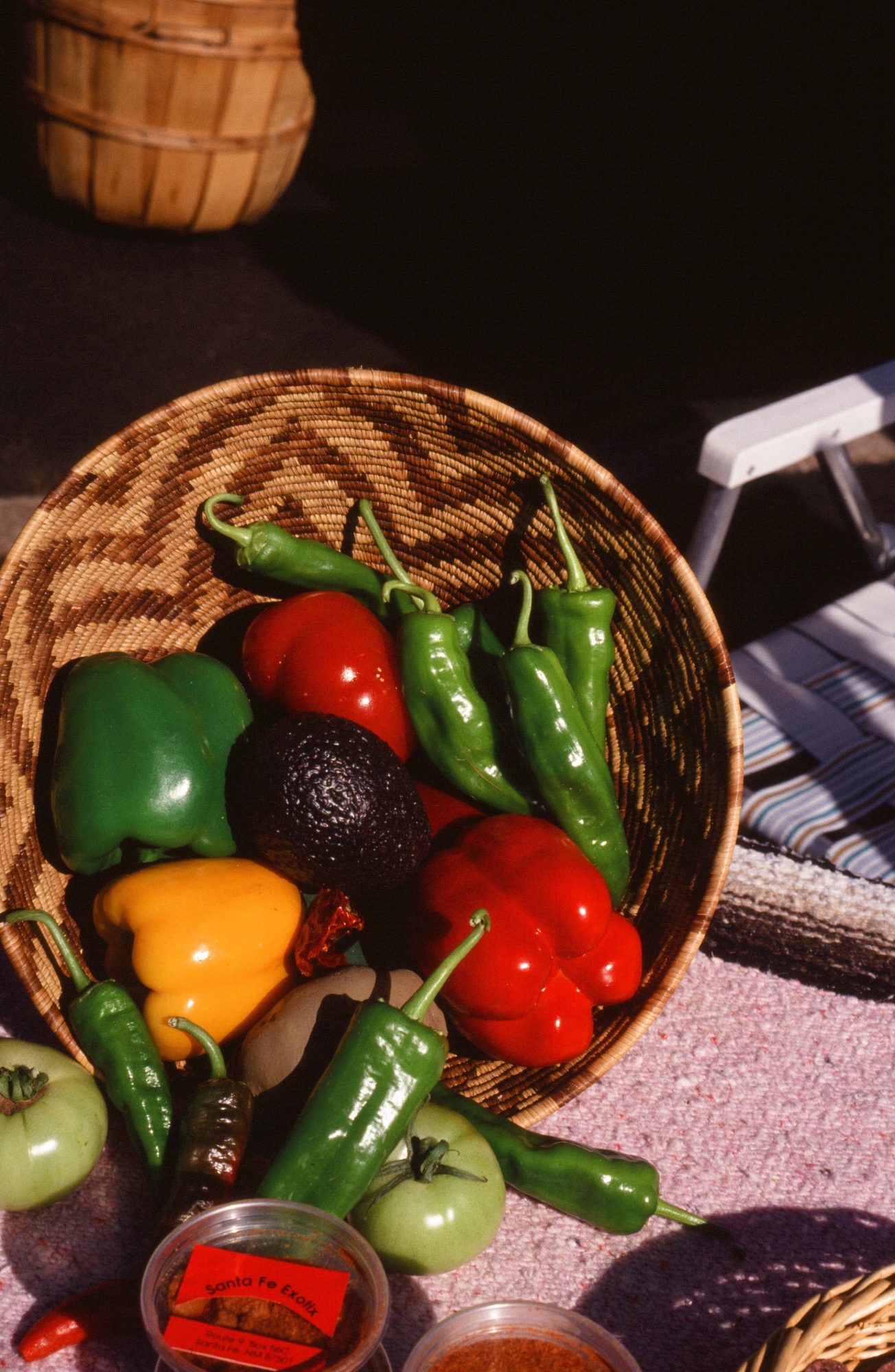
Spend at least your first day or two on foot near the plaza. Right near the plaza are many museums, including the Georgia O’Keefe Museum. They have many superb works of Georgia O’Keefe, and usually an additional exhibit of the artwork of one of her contemporaries. Nearby is the museum of fine arts with many works by southwest artists. The palace of the governors has been converted to the museum of New Mexico history.
Stop by the portico of the Palace of Governors. Native Americans will be selling their own hand-crafted work at very modest prices. Walk just a bit further east to 109 Palace Avenue. This is now a poster shop. During World War II it was the headquarters of the Manhattan Project. Dorothy Mc Kibben was the secretary to J. Robert Oppenheimer. He interviewed her in the lobby of La Fonda. McKibben wrote a fascinating book about the history of the Manhattan Project called 109 Palace Avenue. Ask for it at almost any bookstore in Santa Fe.
The Manhattan Project was a secret, of course. Even the city of Los Alamos, where the bomb was built, was kept secret with very tight security. In the mid 1950’s when my brothers and I were quite young, you had to pass through a guard station both to enter and leave Los Alamos. It didn’t matter if you were Edward Teller, working on the super, or the dishwasher. The official address of the Manhattan Project was P.O. Box 1337, Santa Fe, New Mexico.
The old post office has been converted to the Museum of the American Indian. It is a block from the plaza and not to be missed. San Francisco Street, on the other side of the plaza, as well as Water Street and Galisteo Street, have excellent art galleries.
Walk about three quarters of a mile south on Old Santa Fe Trail to Old Pecos Trail. You will cross a little bridge across the Santa Fe river and come to four museums on a hill. They are the Wheelwright Museum of the American Indian, the Museum of lnternational Folk Art, the Museum of Spanish Colonial Art, and the Museum of Indian Arts and Culture. My favorite of these is the folk art museum, with treasures from all over the world. The Wheelwright is an excellent place to buy handcrafted Indian silver. You can purchase a pass for all four museums.
Now take a day off to visit the art galleries along Canyon Road. There is a community of Tibetan refugees in Santa Fe, with a culture and information center on Canyon Road.
The opera is world famous, with open air performances in the summer. When the opera is not performing, the parking lot is turned into an eclectic flea market. If you have knots in your muscles left over from driving, the spa and baths, or better yet a massage at Ten Thousand Waves, will help.
Outside Santa Fe
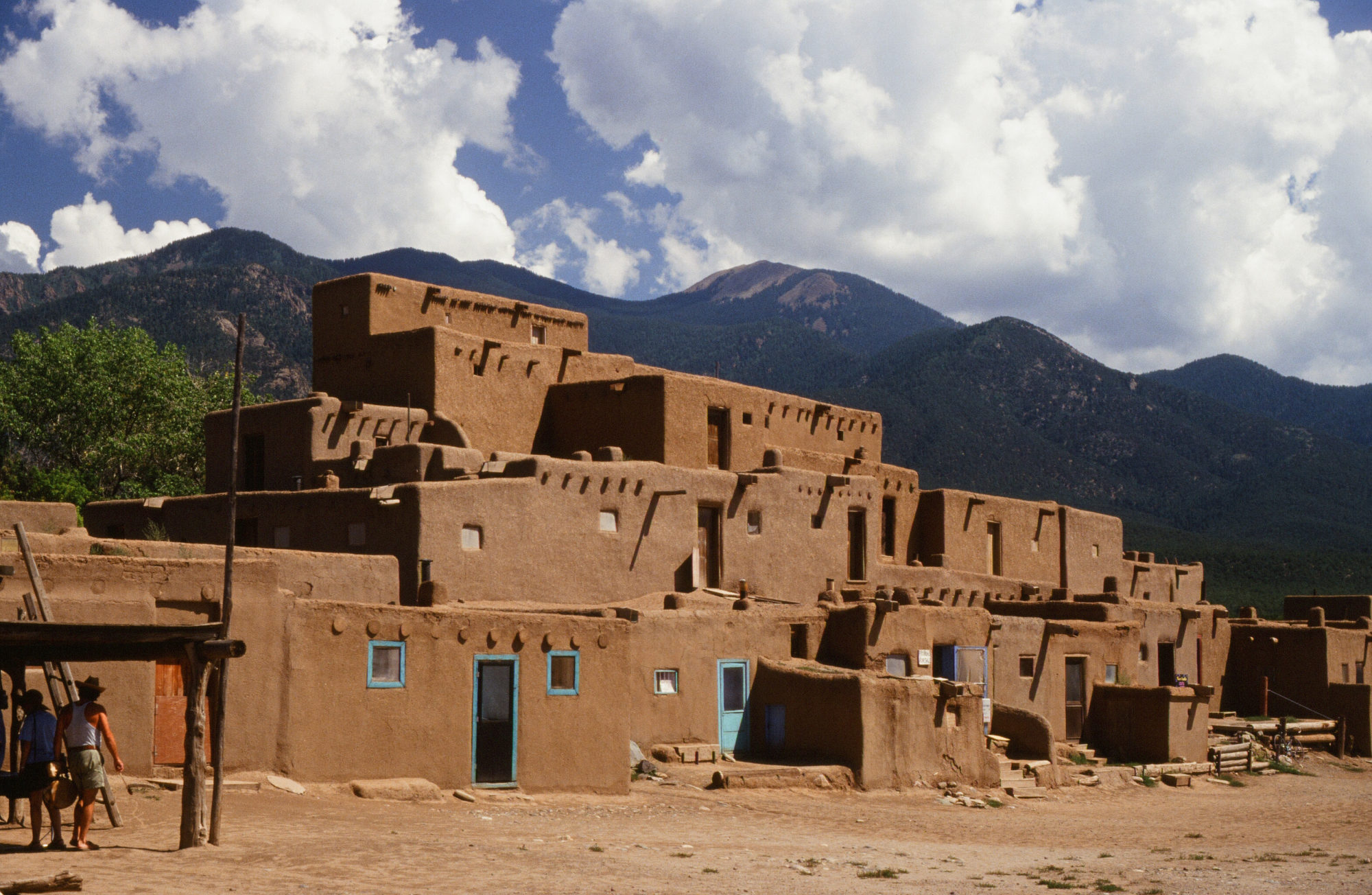
Now it’s time to get out of town.
Without doubt, your first trip should be to Taos. The pueblo is the oldest continuously inhabited dwelling in North America. When you visit, be sure to remember you are a guest in someone’s house. Act with great respect. The residents will charge you a fee to visit, and another fee to use your camera. Be very careful not to photograph the residents; this is thought of as a very serious insult, akin to stealing one’s spirit. They will confiscate your camera.
In the summer of 1971 my brother, Ira, was visiting our family in Santa Fe. He and our cousin Penina decided to hitchhike to Taos. All went well on the way up. Coming back, things went more slowly. Finally an old pickup truck driven by a Native American man pulled over for them. The driver had one arm in a sling, and the cab was spattered with blood. He had had an argument with this son in law, and the young man had shot him. The driver had picked Ira and Penina up in case he passed out and needed to be driven to the hospital. Neither one had a driver’s license.
While you are in Taos, visit the Mabel Dodge Lujan museum. Taos has been an art colony for more than a century.
There are two ways to get to and from Taos. The most obvious is the river road. Highway 68 takes you along the Rio Grande and through some striking scenery.
The Chimayo Valley
On the way back (or up), take the mountain road. This takes you from Rancho de Taos through Las Trampas, Truchas and into Chimayo. Along the way you will see the studios of Spanish weavers. Stop and visit; if you are lucky, you will see them at work.
Stop off at the Santuario de Chamayo. This charming little chapel is a southwest version of Lourdes. Legend has it that many people have been cured of their infirmities by touching the earth at the rear of the chapel. You will see their cast-off crutches and braces arrayed on the wall. If you visit on a sunny Sunday morning you can participate in the Sunday worship in Spanish outdoors
A bit further south you will come upon the restaurant, Rancho de Chimayo. This is my favorite southwest restaurant. You will probably need a reservation.
You join Highway 84 at Espanola, an agricultural hub. As you approach on Highway 76 you will see farm stands selling fresh fruit in the summer, and ristras, long strings of red dried chili.
San Ildelfonso
The pueblo at San Ildelfonso was the home of the potter Maria Martinez. Her black-on-black handmade pottery is world famous. The women at San Ildelfonso follow Maria’s tradition. If you are lucky, you will see them taking their finished pots out of the fire. You can purchase original pottery at the visitor’s center or in the peoples’ homes. Fairly expensive, but the genuine article. You can buy a book about Maria at most bookstores in Santa Fe, and there is a venerable poster with her image to be had in most poster shops.
Near San Ildelfonso is Bandolier National Monument. The valley was inhabited by Anasasi. You can visit the ruins of their ancient cliff dwellings. It has been one of my favorites since I was a boy.
Oio Caliente
Ojo Caliente is a natural hot spring. It has been a healing site since ancient times. The hot pools used to be housed in corrugated metal buildings, segregated by sex. More than twenty years ago, there was a fire. The rebuilt spa is a lot fancier. You can get a massage at Ojo Caliente as well. You can stay in one of their cottages. The food isn’t very good. There is an old tap in the courtyard at Ojo Caliente that pours out water laden with arsenic, which people actually drink, claiming it is good for their health. lt looks exactly as it did in the 1950’s.
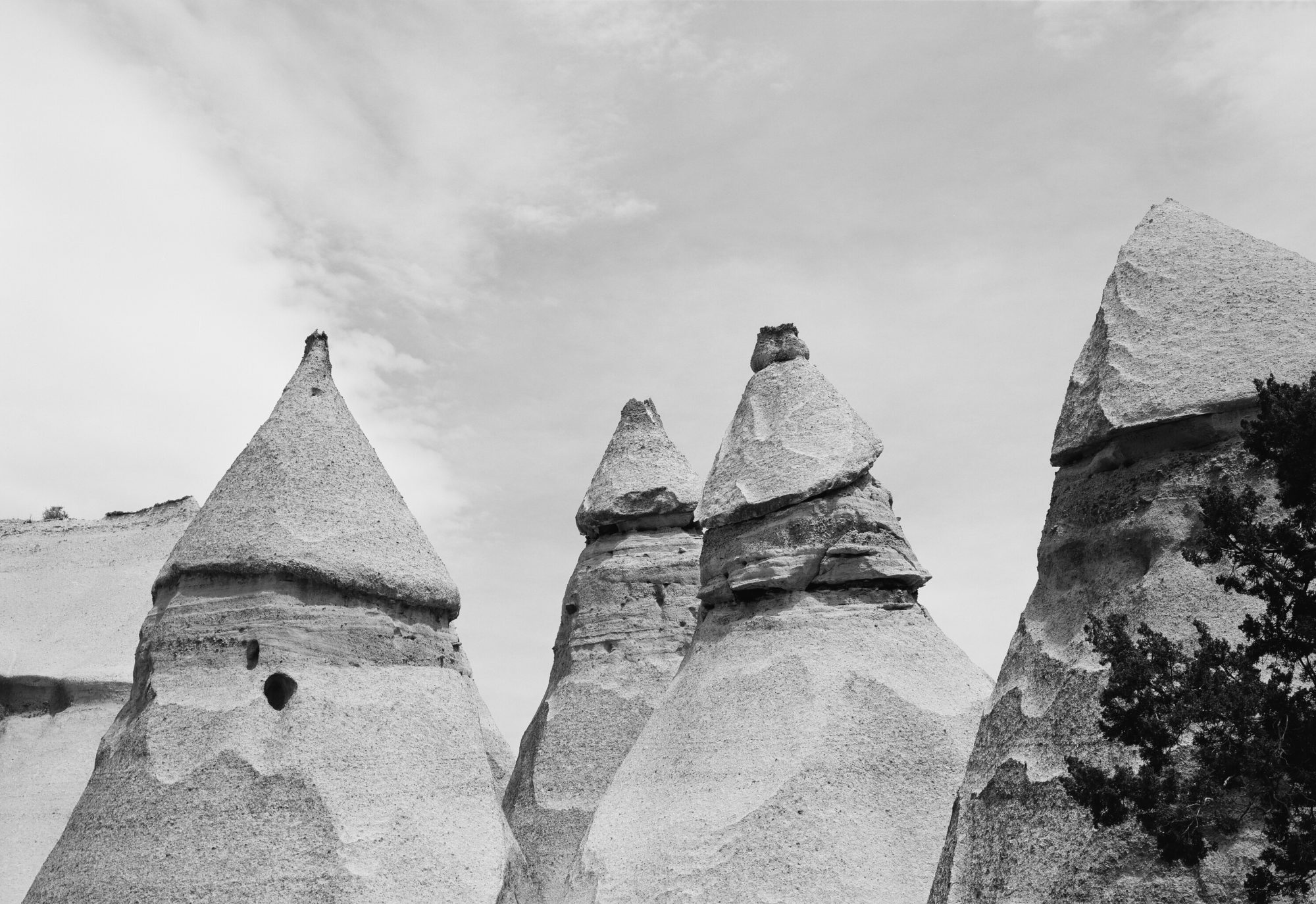
My last venture will take you to Tent Rocks. These are a series of cone shaped hills composed of volcanic tuff. There is a trail about 2½ miles long. It’s a pleasant walk out of Bernallio. It gets crowded on the weekends. Go during the week.
Where to Eat in Santa Fe
You haven’t eaten yet. In addition to Rancho de Chimayo, try La Choza on Alarid Street and the Shed on Palace Avenue. Pasqual’s on Don Gaspar Street is very good. The politicos eat at the Pink Adobe. The Plaza Grill (on the plaza) has good, stick-to-your-ribs food. The food at La Fonda is good too.
Be sure to have a bowl of green chili stew (with or without meat), and a bowl of pozole.
Stay away from Chinese food. Sushi in New Mexico is an oxymoron.
Where to Stay
La Fonda is the oldest hotel in North America. There has been a hotel on that site since 1610. The current building was erected in the 1920’s by the Santa Fe Railroad. At one time it was operated by the Harvey company. My godfather, Sam Ballen, bought the hotel in the late 1960’s. Over the years, he gave me a very small amount of stock in the hotel. Sam Ballen was a very colorful man. If you visit the executive office of the hotel on the second floor, they will sell you a copy of his autobiography. Also, ask the secretary at the executive office for a copy of Ethel Ballen’s tips about Santa Fe. Be sure to tell them I sent you.
The hotel has undergone a recent renovation to accommodate modern travelers. It is full of original art, with several high-end shops and art galleries. It still has its original grace and charm. The Garrett Motor Hotel is another good place to stay.
Local Events
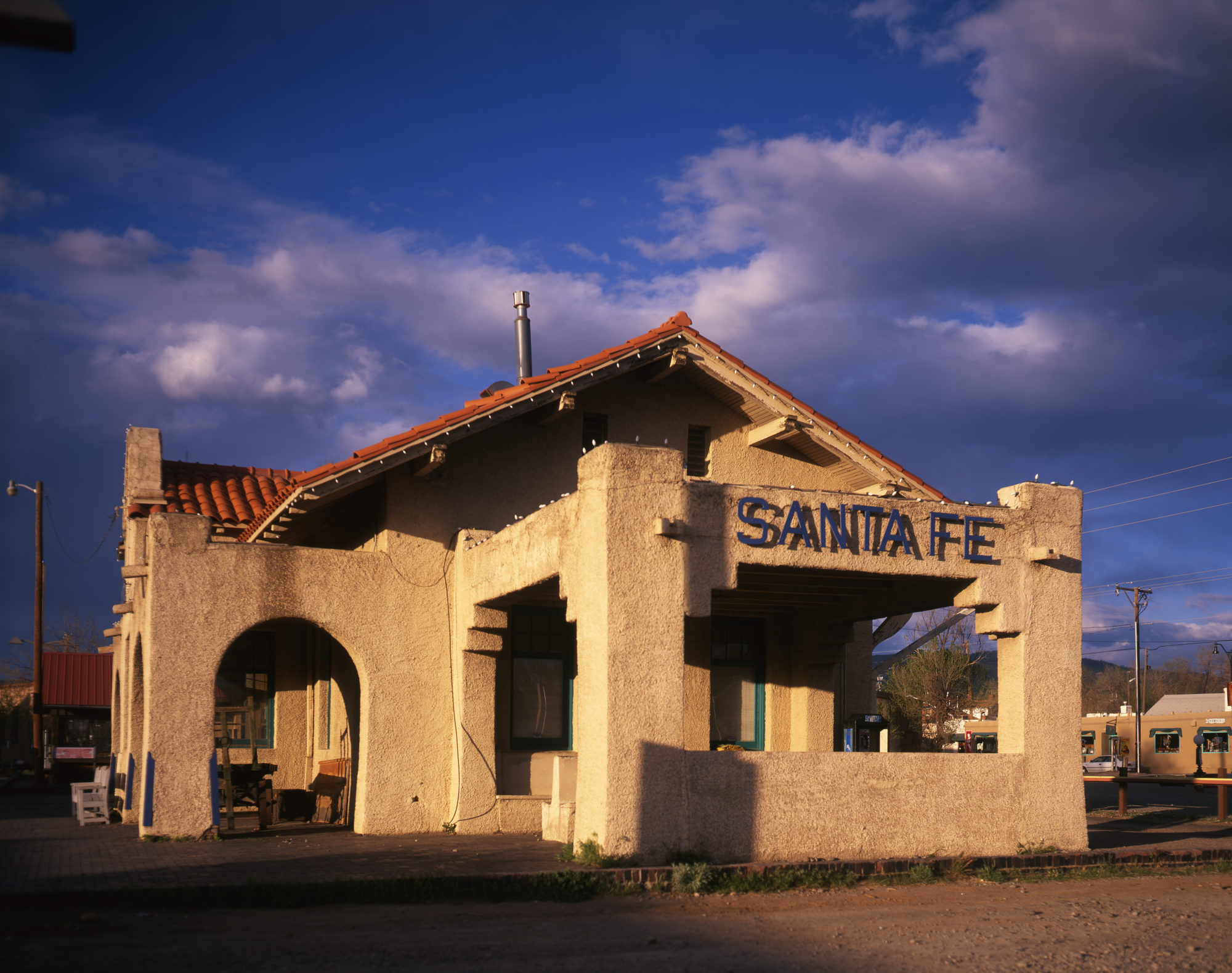
Some of the local events include the Fiesta after Labor Day, the rodeo, the Indian Market and the Spanish Market. The art at the Indian Market and the Spanish Market is usually superb.
There are various traditional ceremonies at nearby pueblos throughout the year. These are not highly publicized. The easiest way to find out about them is to speak to the concierge at La Fonda.
Weather
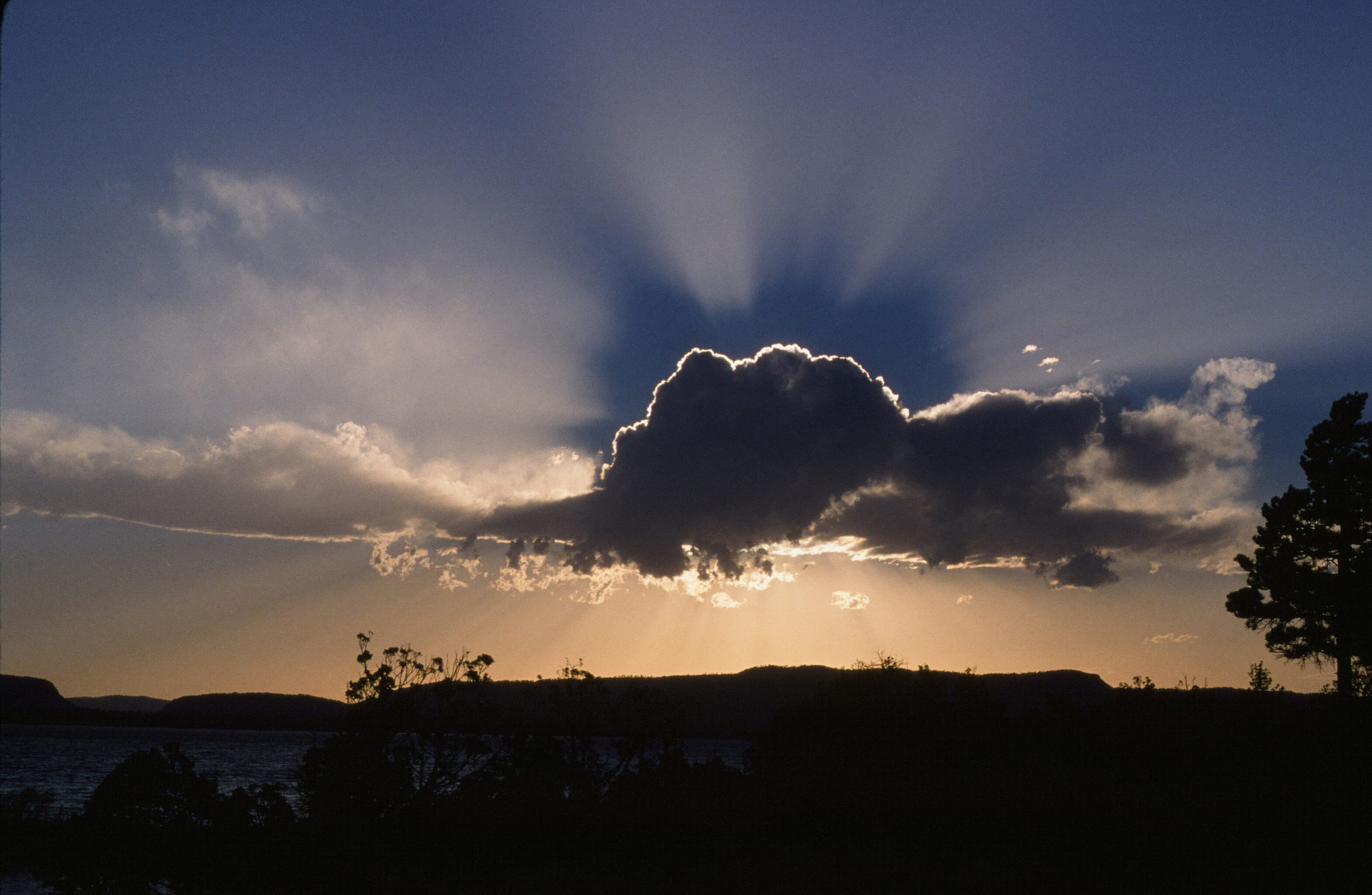 The weather in the summer is hot. Every afternoon the skies open with huge, dramatic thunderstorms. Then everything dries up almost instantly.
The weather in the summer is hot. Every afternoon the skies open with huge, dramatic thunderstorms. Then everything dries up almost instantly.
The aspens turn a wonderful golden color in the fall.
Winter is ski season. Beautiful snow covers everything. All of the houses near the Plaza and on Canyon Road set out luminarias at Christmas time. These are little paper bags, weighted with sand and illuminated by candles. It’s very pretty. Of course, the springtime brings fresh buds and leaves, and new life to everything.
This will get you started.
About the author:
David Michael Bigeleisen has been a lawyer for more than forty years. He defends criminal cases.

